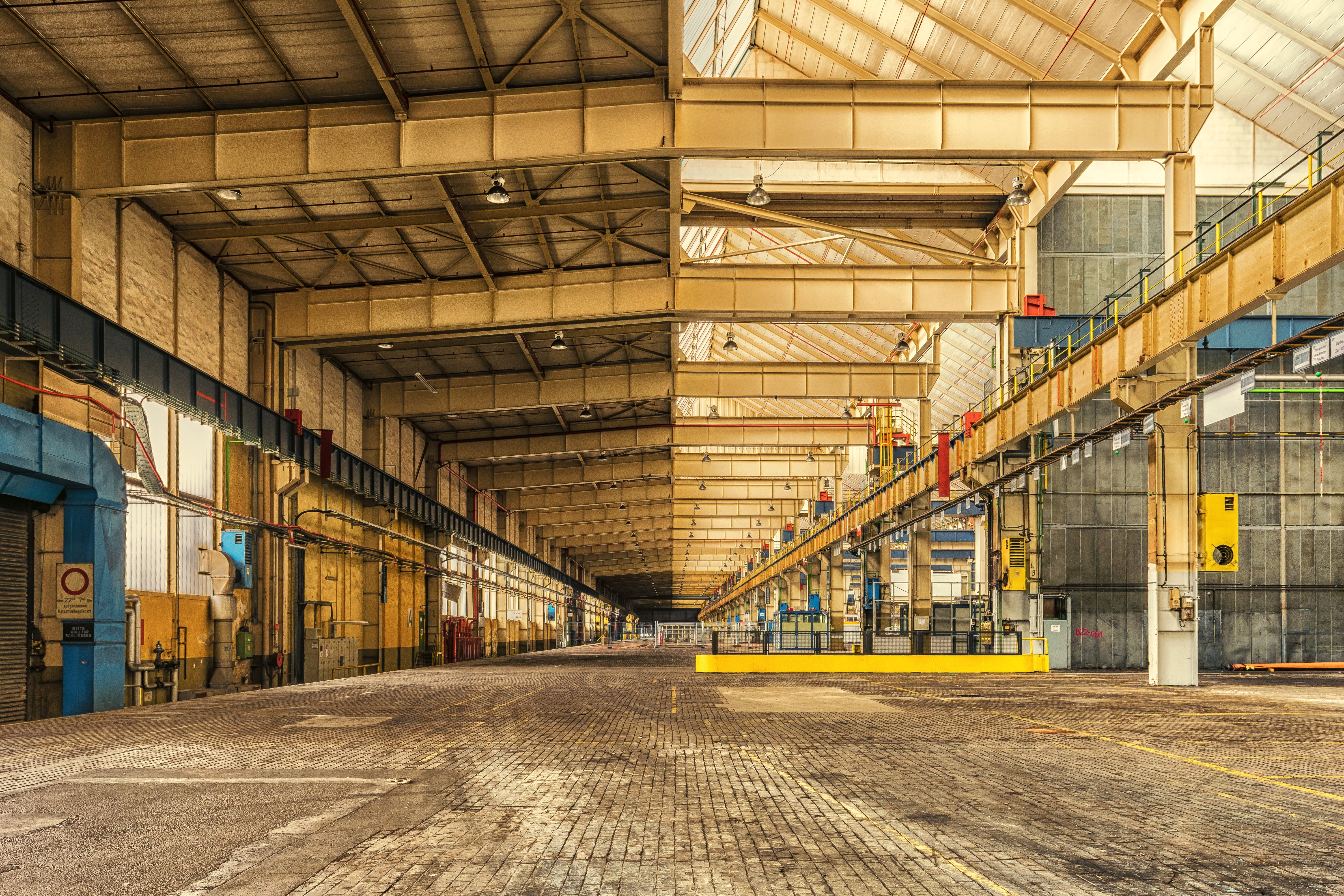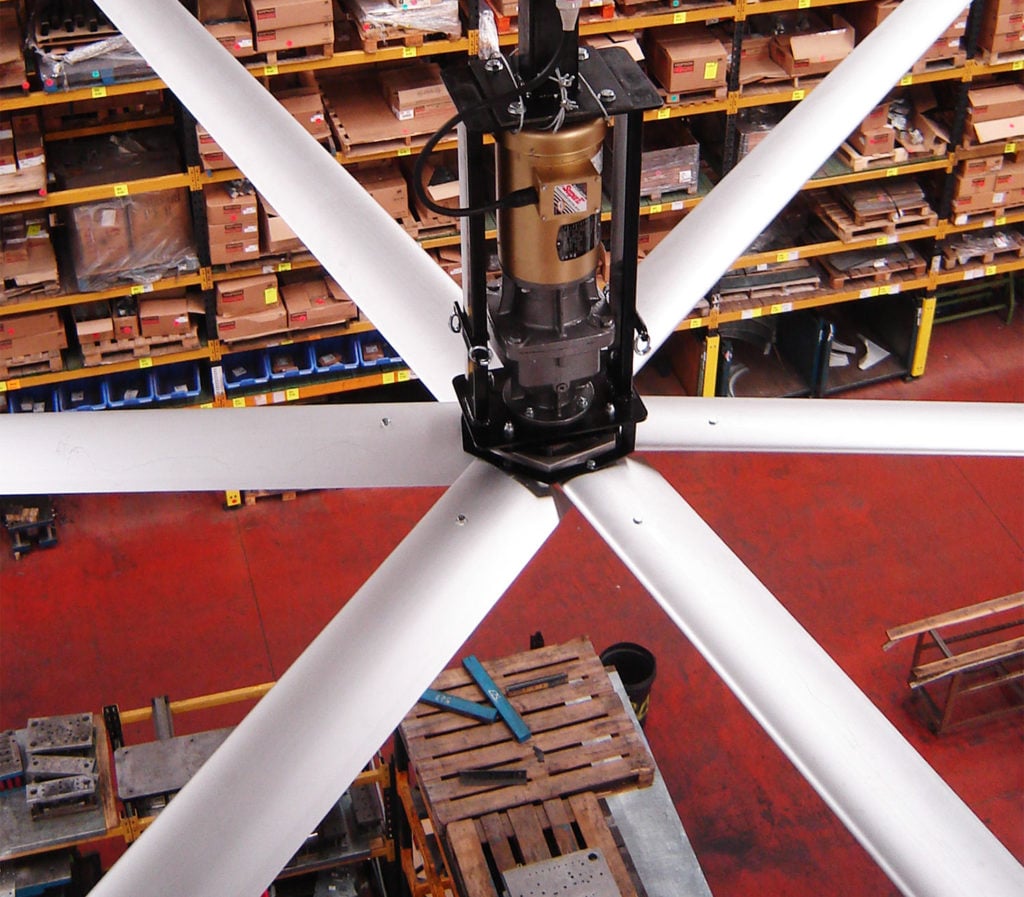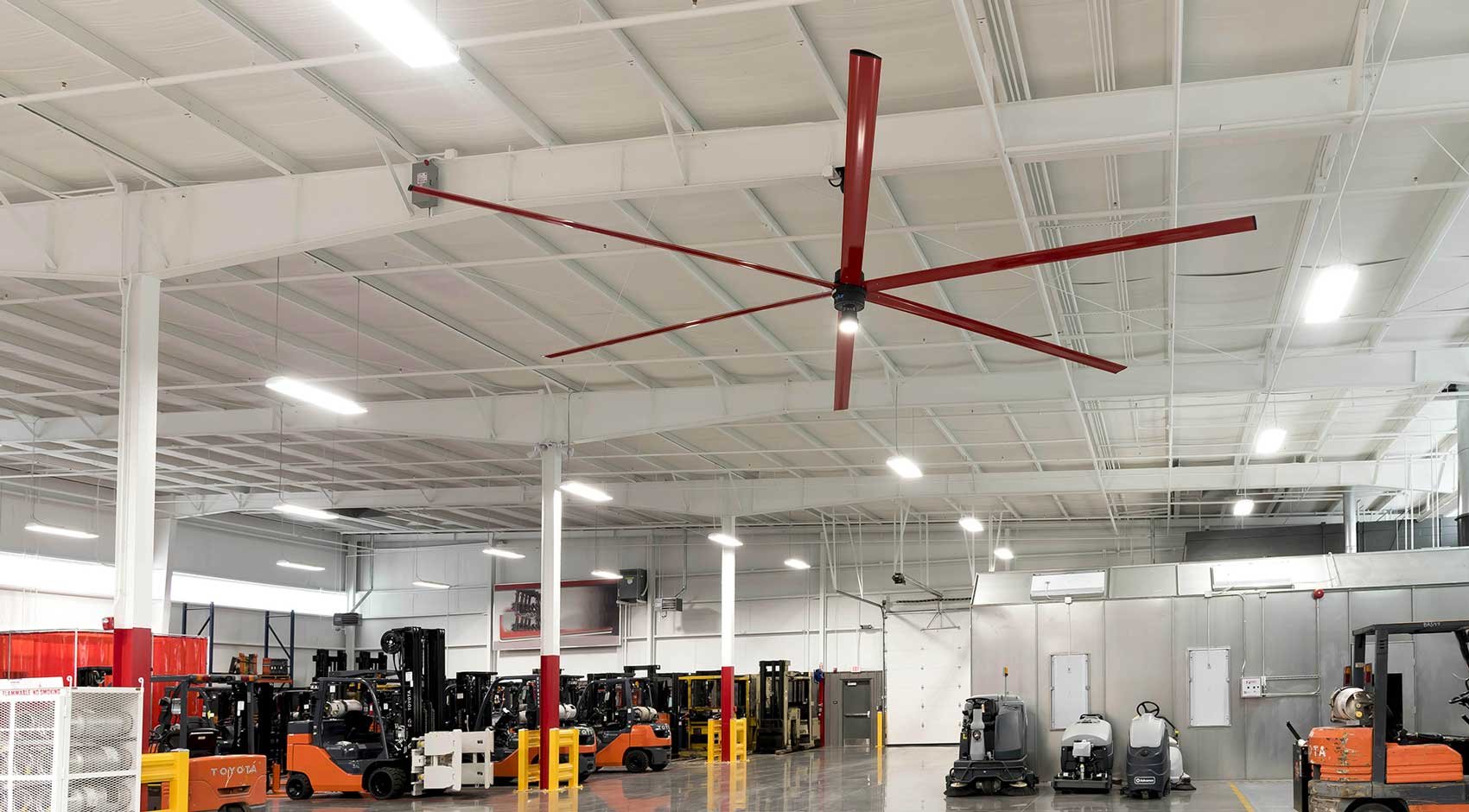Sweating Slab Syndrome (SSS) is a common problem in buildings with concrete surfaces. All kinds of...
How to Reduce Humidity in a Warehouse

High humidity levels and excessive moisture in your warehouse can lead to serious health risks and consequences for warehouse workers. According to the World Health Organization, high humidity levels are associated with increased growth of mold, bacteria, and other microorganisms that cause human illness. This is a significant problem that prompts us to determine how to reduce humidity in warehouses.
Industrial and warehouse spaces have a high risk of accumulating moisture, which can damage the interior building structure and machinery. Not to mention the mold growth that forms due to the humidity can pose major health and safety risks to employees working in an industrial environment, which affects work performance.
The Source of Humidity & Moisture
Before we learn how to reduce humidity in warehouses, it’s important to know how humidity and moisture develop in industrial spaces. Typically, air fluctuations are caused by warm air seeping into buildings with open doors and windows. Without proper air circulation, the temperature difference between the outside and inside air can cause condensation.
Additionally, when temperatures get cooler at night, the humidity gets worse causing surface materials, such as floors and machinery, to sweat, rust, and rot. This can cause major health risks and consequences to warehouse workers from concrete floors (more on this later).
PROBLEMS ASSOCIATED WITH HUMIDITY
 STAGNANT AIR AND BACTERIA GROWTH
STAGNANT AIR AND BACTERIA GROWTH
Some of the worst areas for airborne bacterial growth are stagnant zones with excess humidity. Stagnant air is the air that has no movement and just sits there. When you have stagnant air, the excess humidity makes surfaces damp, which facilitates the growth of bacteria, mold, and viruses.
Mold is not always visible, but spores are present and will germinate when environmental conditions have sufficient moisture. As spores germinate, they multiply and significantly reduce the air quality, which is unhealthy and unsafe for your employees.
HEALTH RISKS AND CONSEQUENCES
The growth of microorganisms, such as mold, can increase the risk of individuals becoming sick. As you may know, excessive humidity can lead to many respiratory issues and can even cause interruptions in sleep patterns.
When employees become ill and their health declines, their morale and productivity will also decrease. This will affect your bottom line. The best way to prevent mold and bacteria growth is by keeping humidity levels low and circulating the air.
Sick Building Syndrome
Sick Building Syndrome (SBS) is a condition that causes discomfort and sickness in individuals working in a particular area with excessive humidity and a lack of proper ventilation.
According to the United States Occupational Safety & Health Administration (OSHA), common symptoms of SBS include headaches, dizziness, coughing, fatigue, difficulty concentrating, and ENT (eye, nose, and throat) irritation. Although the specific cause of SBS is unknown, research has shown that commercial buildings with stagnant air, poor ventilation, and higher humidity are much more likely to suffer from SBS.
Sweating Slab Syndrome

Sweating Slab Syndrome (SSS) is another serious repercussion of high humidity levels. SSS is the excess moisture sitting on the surface of a floor or slab of concrete. It occurs when humid air comes across a cold surface and attempts to lower its temperature to match the temperature of the surface.
Since cold air holds less humidity than warm air, the air has to deposit its excess moisture onto a surface, often a concrete floor or shelf. The excess moisture sits on the surface causing a serious slipping hazard which can also be dangerous for employees using forklifts, carts, and other equipment that moves across the floor.
Options to Reduce Humidity in a Warehouse
1 - COMPLEMENTARY DEHUMIDIFICATION SYSTEMS
One way to reduce humidity in warehouses is by setting up mechanical dehumidifiers and desiccant heat pump systems to further reduce the humidity and condensation in commercial spaces. Eliminating unwanted moisture will reduce the spread of airborne bacteria since high volumes of bacteria are found in water vapor and droplets suspended in the air.
An industrial dehumidifier can remove up to 160 pints of moisture(depending on the model and the square feet of coverage). However, warehouse dehumidifiers can be noisy, so take note of that before purchasing them.
2 - BRING IN THE OUTSIDE AIR
Additionally, opening windows and doors can sometimes help reduce humidity levels and increase ventilation in industrial spaces. Having a cross-breeze can be even more effective. This can be done by opening doors and windows on both sides of the facility to create a cross breeze flowing throughout the space. Having proper ventilation for a few hours a day can help greatly reduce humidity in warehouses, giving you better humidity control.
3 - HVAC SYSTEMS
If you have an HVAC system, turning on your air conditioner (AC) will help reduce indoor humidity and cool down your employees, products, and machinery. You can make sure your HVAC system is in tip-top shape by regularly cleaning the furnace and AC filters so they are not clogged and won’t block any airflow. Having clogged filters can actually contribute to a larger humidity problem.
Note that even if you have an HVAC or air conditioning system, exhaust fans, or open the doors and windows, it's possible that the air in your environment isn't mixing properly and can still cause a humidity problem.
4 - HVLS Fans
Humidity plays a major role in the perception of heat in a building. Cutting down on humidity is one of the best ways to keep individuals working in a building comfortable. Those working in rooms cooled by HVLS fans perceive the temperature to be 8-9 degrees cooler than what the actual temperature is.
One of the most efficient ways to reduce humidity in warehouses is to invest in HVLS fans. HVLS fans can help cut down on humidity, moisture, and bacteria while operating more efficiently than conventional fans. By removing moisture and humidity in the air, HVLS fans can improve the air quality and make people feel more comfortable.
The World Health Organization (WHO) states that one of the best ways to reduce and control indoor humidity levels is by increasing ventilation. HVLS fans can do just that! They can also help reduce bacteria growth and improve control over excess humidity levels.
Running your HVLS ceiling fan, along with the other tips mentioned above, is an effective, inexpensive way to reduce humidity in warehouses. They are a straightforward, economical solution that enhances the indoor air quality in your industrial environment.
How HVLS Fans Improve Humidity in a Warehouse

How can HVLS fans help reduce humidity in industrial environments? HVLS fans control indoor humidity levels through proper ventilation. This is done by creating a large column of airflow that covers large areas. Larger HVLS fans can cover areas as big as 22,000 square feet!
HVLS fans can also reduce humidity in a warehouse by continually redistributing the air, which prevents the air from becoming saturated with moisture. These fans circulate at low speeds, creating a larger column of air than conventional fans.
These massive columns of airflow the HVLS fans produce lead to increased ventilation and equalize the room's temperature. When the warmer ceiling air mixes with cooler floor-level air, it minimizes ceiling-to-floor temperature differentials. Because HVLS ceiling fans help bridge the gap between temperature differences, it increases the surface evaporation rate, reducing condensation.
As a result, your facility has a lower risk of bacteria and mold growth. By creating indoor air movement with your HVLS fan, you will not only create a cooling effect but also control indoor humidity levels through increased ventilation.
Benefits of MacroAir HVLS Fans

Cutting down bacteria and mold growth in your facility by reducing moisture and creating optimal humidity levels is not the only benefit MacroAir HVLS fans provide. They can also effectively treat Sick Building Syndrome and Sweating Slab Syndrome.
With an HVLS fan, you cut down on SSS by redistributing the air in your building and homogenizing its humidity. Industrial ceiling fans can help maintain an even temperature by providing necessary air circulation throughout your facility during the day and night when moisture becomes a concern. More air circulation in your space means a lower risk of SSS.
Other Benefits of HVLS Fans
- Cleaner and healthier indoor air quality
- Lower moisture
- Less harmful bacteria
- Better productivity
- Less humidity
- Energy Efficient
- Cleaner and healthier indoor air quality
- Lower energy cost in comparison to air conditioning
- Enhanced heat and cooling effect
- Effective for large-space thermal comfort
- Multiple sizes of fan blades
Final Thoughts on Warehouse Humidity Control
Every building will have a certain degree of humidity and moisture. Still, if the humidity in your space becomes excessive, it can be dangerous for your employees and harm your equipment and inventory. To ensure employee safety, choose a dependable HVLS fan to help improve airflow, decrease the bacteria and mold in your space, and make your employees happier and healthier with better indoor air quality.
Download your FREE Warehouse Humidity Control Checklist below to learn how to reduce humidity in warehouses and ensure a safe and comfortable working environment for your employees!

